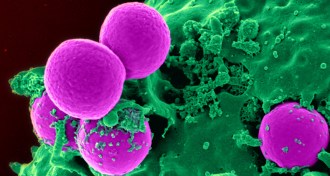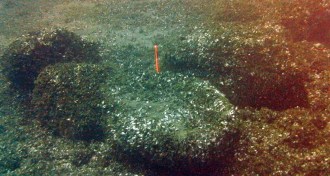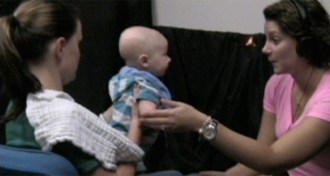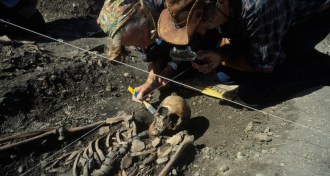Humans
Sign up for our newsletter
We summarize the week's scientific breakthroughs every Thursday.
-
 Health & Medicine
Health & MedicineDrug resistance has gone global, WHO says
World Health Organization reports that antibiotics are failing worldwide against infections.
By Nathan Seppa -
 Health & Medicine
Health & MedicinePotential H7N9 bird flu vaccine shows promise
An early trial of a bird flu vaccine suggests that the treatment could be used to counter the potentially deadly H7N9 flu virus.
-
 Health & Medicine
Health & MedicineWith help from pig tissue, people regrow muscle
Noncellular material implanted in patients attracts stem cells to fix injuries.
By Nathan Seppa -
 Science & Society
Science & SocietyStudents retain information better with pens than laptops
Compared with typing on a laptop, writing notes by hand may lead to deeper understanding of lecture material.
-
 Anthropology
AnthropologyLake Huron holds 9,000-year-old hunting blinds
The human-made hunting blinds were arranged to drive caribou into a centralized "kill zone," suggesting cooperation among ancient hunters.
-
 Psychology
PsychologyBabies learn some early words by touch
Tactile cues provided by caregivers give infants a leg up on learning words for body parts.
By Bruce Bower -
 Health & Medicine
Health & MedicineInduced labor doesn’t necessarily kick off cascade of interventions
A large analysis of clinical trials finds that jump-starting labor actually leads to fewer C-sections, a finding that runs contrary to common birthing wisdom.
-
 Genetics
GeneticsY chromosome gets a closer examination
The Y chromosome may play a larger role in Turner syndrome and in health and disease differences between males and females than previously thought.
-
 Psychology
PsychologyWord-streaming tech may spell trouble for readers
Technologies like Spritz that display one word at a time on a screen reduce reading comprehension, a new study concludes.
By Bruce Bower -
 Genetics
GeneticsFarmers assimilated foragers as they spread agriculture
While some European hunter-gatherers remained separate, others mated with the early farmers that introduced agriculture to the continent.
-
 Humans
HumansCould the menstrual cycle have shaped the evolution of music?
A new study suggesting that women select better musicians shows how women’s role in evolution is being redefined.
-
 Health & Medicine
Health & MedicineEnzyme may help aspirin protect against colon cancer
Aspirin may not reduce colon cancer risk in people with low levels of a protective enzyme called 15-PGDH.
By Nathan Seppa